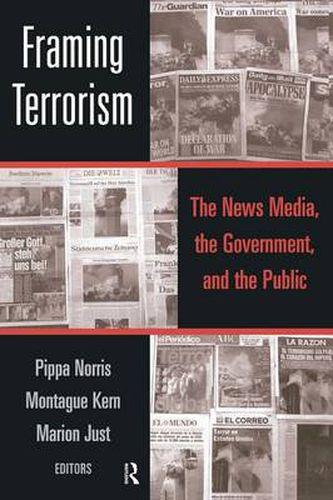Readings Newsletter
Become a Readings Member to make your shopping experience even easier.
Sign in or sign up for free!
You’re not far away from qualifying for FREE standard shipping within Australia
You’ve qualified for FREE standard shipping within Australia
The cart is loading…






Terrorism now dominates the headlines of all the networks from New York to London, and Rome to Moscow and is spreading from Al Jazeera in Qatar to Islamabad, Riyadh, Baghdad, and Kabul. This work argues that headlines matter as much as the act, in political terms. Widely publicized terrorist incidents leave an imprint upon pubic opinion, muzzle the ‘watchdog’ role of journalists and promote a general one-of-us consensus supporting the security forces, and generate a strong reaction by governments attempting to limit the voice of terrorist groups. The contributors of this new work begin by focusing on how governments, security forces, and terrorist groups seek to manipulate the news, including the legal and normative issues of formal and informal government censorship and curbs on freedom of the press. The contributors compare coverage of 9/11 to coverage of other incidents of terrorist violence, including Israel-Palestine and Northern Ireland. They then focus upon how journalists construct the news and how the public responds to news coverage - including ‘rallying-around-the-flag’, public attention and comprehension of terrorist events, and the public’s response to issues of civil liberties vs. security. This book will provide a systematic comparison of the patterns and consequences of mass media coverage of terrorism.
$9.00 standard shipping within Australia
FREE standard shipping within Australia for orders over $100.00
Express & International shipping calculated at checkout
Terrorism now dominates the headlines of all the networks from New York to London, and Rome to Moscow and is spreading from Al Jazeera in Qatar to Islamabad, Riyadh, Baghdad, and Kabul. This work argues that headlines matter as much as the act, in political terms. Widely publicized terrorist incidents leave an imprint upon pubic opinion, muzzle the ‘watchdog’ role of journalists and promote a general one-of-us consensus supporting the security forces, and generate a strong reaction by governments attempting to limit the voice of terrorist groups. The contributors of this new work begin by focusing on how governments, security forces, and terrorist groups seek to manipulate the news, including the legal and normative issues of formal and informal government censorship and curbs on freedom of the press. The contributors compare coverage of 9/11 to coverage of other incidents of terrorist violence, including Israel-Palestine and Northern Ireland. They then focus upon how journalists construct the news and how the public responds to news coverage - including ‘rallying-around-the-flag’, public attention and comprehension of terrorist events, and the public’s response to issues of civil liberties vs. security. This book will provide a systematic comparison of the patterns and consequences of mass media coverage of terrorism.